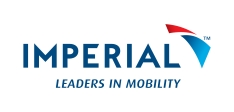Everything and everyone is going digital! Stop for a moment and look around you – digitisation has, and continues to take over and touch our lives at every turn.
In the formative years of the online presence era, being online meant having a website. There has been a much faster pace of development in what we now know as a digital presence. Today, having a digital presence is so much more than successfully designing and launching a good website, although this is arguably still one of the foundational digital presence platforms.
In today’s world where consumers are time poor and options rich, the advantages of being where the customer expects to find you, when they expect it and how they expect you to show up, is often the difference between a successful and unsuccessful business of modern-day.
Digital presence is multifaceted. It is all about how your business is positioned to be seen on the internet. When you develop a digital strategy, the question you seek to answer is: “In order to design a memorable experience for my customers, what will they find when they search for my business online?”. Online presence includes an up-to-date and well-managed website, and the various social media and digital platforms your target market is active on, such as Facebook, LinkedIn, Twitter, digital magazines, news sites, YouTube and many others.
“Given how broad digitisation is, it is prudent that we discuss each of the platforms in turn. This way, you will be able to systematically design your own specific strategy and tactics to achieve your business objectives using the practical tips that WesBank offers to SMEs and start-ups. Let us start with the most effective use of a website,” says Futhi Cabe, WesBank Head of SME Segment.
Here are some useful tips for you to consider:
Your website is for your users, not for you
Always remember that the website you design is for your users. Unsuccessful websites tend to have one thing in common: they were designed to disseminate information that the company or organisation wanted to disseminate. Conversely, successful websites are premised on first finding out what the targeted users want and need. They respond to the users’ needs. After all, you are in business to meet your customers’ needs. Ask yourself if you can respond to the following questions in your website design: Who are our users? Are they new or repeat customers? Are they novices, moderate or expert users? What do they require? Why do they visit our website? What do they find? Will they make the purchase? Your website is for your users. It’s important that you understand your user, intimately.
Hire or outsource to a specialist web developer
You can never substitute quality! Now that you understand your customer needs and wants, consider employing a professional website developer who can coalesce your customer needs with your company goals. Be mindful of the need to cater to proficient as well as novice users. Navigation of your website must be user-friendly, easy, safe, enable browsing and efficiently direct users to the information they are searching for.
Know your company goals for your website
Work closely with your website developer. Be crystal clear in determining the purpose of the site. What objectives do you want to achieve through your website? Some thoughts to guide your thinking could include the following: increasing public awareness, increasing sales, generating leads, generation of requests for information, provision of the latest and most relevant information, supplementing marketing and advertising campaigns, generating in-store traffic or shifting customers to buy more online than in-store. You can use data from your website traffic to build intelligence that enhances your understanding of your customers, including when they visit your site and for how long, their demographics, contact details, and what products or services are generating a response.
Use your competitors’ websites to get ahead
Take careful note of your main competitors’ websites and see what they do well and where they are not performing as well. In analysing your competitors’ websites, your aim is to improve your site to meet your customers’ needs and wants. A word of caution here is prudence: avoid copying your competitors’ websites, but rather improve your site to better support and enhance your customers’ experience.
Simplicity is the ultimate sophistication
Keep it simple. This will ensure the regularity of visitors returning to the site and is driven largely by what your site provides. Appreciate that your website users and customers are busy people who do not necessarily have the time or inclination to navigate the complex intricacies of the websites they visit. Remove anything that is unnecessary and distracts from the task at hand. The general rule of thumb is: “the simpler, the cooler”. Users have a propensity to return to simple, user-friendly and easy to navigate sites.
Protect your users from risk
It is your duty to guarantee the privacy and confidentiality of your users’ personal information. It is important that you familiarise yourself with the provisions of the POPI Act (Protection of Personal Information Act). Ensure that you use their personal information only for the purposes for which the information was solicited and for which they have given their consent.
Humanise technology
Always remember that your website’s aim is to garner efficient relationship-building with your users. Consciously avoid designing a cold, heartless and unresponsive website. Continuously be aware of the latest trends and best practices that leverage technology efficiency while providing your web users with an emotional and fulfilling customer experience.
“Building and launching your website is an investment in the future success of your business. Do it with the right goals and objectives in mind, and not for the sake of having a digital presence. It is a ‘living thing’ that requires constant attention, updates and nurturing to grow and flourish. Make sure you are launching your business website for all the right reasons,” concludes Cabe.


























